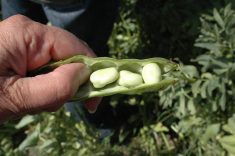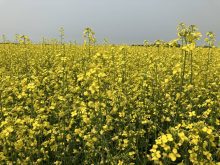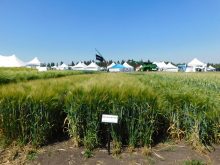Syngenta Crop Protection Canada
Traditionally, growers have viewed seed treatments as something akin to an insurance policy, providing protection against potential pests and seed and soil-borne diseases and minimizing resulting crop damage. But producers are beginning to see seed treatment in a different light – not just as insurance but as an essential component of a complete yield management program.
New scientific data is now available that supports what many growers have long believed – thiamethoxam has been proven to increase plant stand and yield, regardless of pest pressure.
Read Also

New crop insurer policy enables easier startup for faba beans
Agriculture Financial Services Corporation updated its normals for faba beans, which may open the door for more Canadian producers to feel comfortable growing the pulse crop in the future.
Independent research conducted in fields and labs around the world has shown that thiamethoxam helps plants increase the production of certain proteins that are critical to stress tolerance. This process helps plants develop strong root systems and more robust seedlings that are better able to cope with early season stresses such as drought, frost, low pH, high salinity and pests.
The scientific evidence shows significant yield increases, even in years when pest pressures are low.
WIREWORM
Wireworm is a serious problem for pulse and cereal growers in Alberta. Thiamethoxam has been proven to force wireworms to become dormant, reducing the impact the insect has on crops and increasing yield by five to seven per cent (when compared to yields when wireworm was present and seed treatment was not used).
Pea leaf weevil is likely to cause serious damage to pea crops in Alberta during the 2009 growing season. Seed treatments work systemically, moving chemicals that kill adult pea leaf weevils throughout the entire plant. When adult pea leaf weevils feed on the plant’s leaves, they ingest the chemicals and die.
ROOT ROT
Root rot is another common problem for Alberta cereal growers. Root rot is a complex of soil-borne fungi that infects seedlings as they germinate and continues to infect plants throughout their life cycle. Root rot can remain in the soil for many years, causing damage to future cereal crops. Farmers who are affected by root rot are often forced to change crops from cereals to canola or pulse crops, which may mean disrupting regular crop rotations. Seed treatments which also contain a fungicide can help to alleviate this problem.
Seed care is both an art and a science and correct application is paramount to getting good results and maintaining ROI. When applying a seed treatment consider both product rate and seed coverage as both factors will affect overall results. When using a seed treatment applied on-farm, be sure to read the product label carefully. To maximize the seed treatment’s efficacy, it may be worth investing in modern seed treating equipment that provides good seed coverage. Old technologies such as drip-or gravity-fed seed treatment applicators are less effective and don’t allow for accurate volume control or seed coverage.
Where possible, it’s advisable to use a certified commercial seed treater to apply seed treatment. Commercial treaters have the knowledge, training and equipment necessary to ensure that each seed receives proper coverage. In fact, having seed treated by a commercial seed treater is one of the best ways to get the most out of an investment in seed treatments.
Growers who use seed treatments agree that it should be an essential part of a yield management program.














